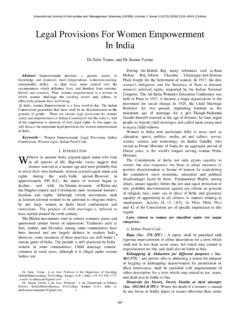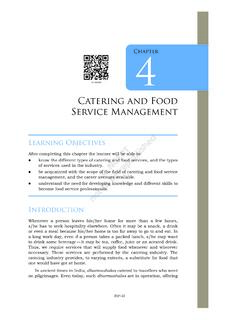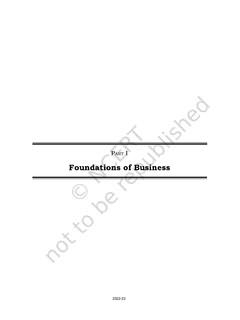Transcription of Science and technology in Medieval Islam
1 Science and technology in Medieval Islam What is Islam ? Islam is a religion that began in the 7th century with the prophet Muhammad in Mecca. Muhammad believed that he was a messenger sent by God to teach people the right way to live. Islam is an Arabic word which means submission to God . The holy book of Islam is the Qur an ( Koran ), and the centre for Muslim worship is the House of Prayer in Mecca. During the 6th century, Arabia had two powerful neighbours: the Byzantine empire and the Sassanian empire. The Byzantine empire was Christian and its capital was Constantinople which is now the city of Istanbul in Turkey. The people of the Sassanian empire worshipped the sun-god, Ahura Mazda, and followed the teachings of an ancient philosopher, Zoroaster. Islam grew and spread rapidly east and west from Arabia to become a powerful rival to Christendon. Muhammad had to leave Mecca because his teachings angered many of its citizens. He went to Medina where he was accepted and became an important religious leader.
2 In 622, Muhammad made a special journey to Mecca from the city of Medina which is 350 km to the north of Mecca. This journey is known in the Islamic calendar as the Hirja. The Islamic calendar begins in the year 622. After the death of Muhammad in 632, Muslims came together to choose a new leader or khalifa (caliph) to be the successor of Muhammad. The caliph was to be the symbolic head of the Muslim community throughout the world. A religion that began with the prophet Muhammad in the 7th century Muhammad believed he was a messenger sent by God Muslims follow the teachings of the holy book, the Qur an Muslims pray in the direction of Mecca, the centre for Islamic worship Islam spread rapidly throughout the Middle East and beyond Photograph courtesy of Science and technology in Medieval Islam The Golden Age of Medieval Islam Early Islam spread rapidly from its centres in the Middle East to the west to Cairo (Egypt), across North Africa and into southern Spain, and to the east through Persia (now Iran) towards Asia.
3 The period of approximately 750 to 1050 AD was a golden age for the Islamic world. Muslim scholars and scientists made great developments and discoveries. building on the achievements of previous civilisations. The first dynasty of caliphs, or Muslim rulers, was the Umayyad who ruled from Damascus in Syria. They were replaced by the Abbasid caliphs in 749 who ruled for the next 500 years from Baghdad in Iraq. Arabia was at the crossroads between Asia, Africa, and Europe and the Arab people traded widely with merchants from places as diverse as China, India and southern Europe. Trade and conquest led to cultural exchange and the spread of knowledge. The practical problems of trade over long distances also led to the development of techniques for navigation by the stars and a greater understanding of time. Great centres of scholarship were established in cities such as Baghdad (in modern-day Iraq) and Alexandria. Islam spread rapidly with the conquests of the first caliphs, or Muslim rulers 750-1050 AD was a golden age for the Islamic world Arabia was at the crossroads of trade between Asia, Africa and Europe Trade and conquest led to cultural exchange and the spread of knowledge Cities like Baghdad and Alexandria became great centres of scholarship Science and technology in Medieval Islam Science and Learning in Medieval Islam Early Islamic teaching encouraged and promoted the pursuit of scholarship and Science .
4 Seeking knowledge about the natural world was seen as the duty of every Muslim as the following Hadith (sayings of the Prophet Muhammad) show: He who pursues the road of knowledge, Allah will direct to the road of (From Science in Medieval Islam by H. Turner) The scholar s ink is holier that the martyr s Things that improved the quality of life, like Science and technology , were encouraged and welcomed. These included practical things like navigational aids for travellers, geographical maps, medical knowledge, ways of measuring and calculating, and tools for agriculture. The use of paper and books was very important in sharing and promoting knowledge in early Islam . The Muslims learned how to make paper from Chinese papermakers, and a paper mill was built in Baghdad. A huge book industry was established and there were bookshops and important libraries in cities right throughout the Islamic empire. Wealthy patrons promoted this industry by buying expensive books, often lavishly illustrated, for their own private family libraries.
5 A new unified Arabic language was developed which became the language of international scholarship. Muslim scholars in institutions such as The House of Wisdom in Baghdad translated many important works from Greek, Latin and other languages. This helped to preserve important philosophical and scientific works from the ancient world, and to transmit this learning to European scholars in the late Medieval period. In the 10th century a huge library was established in Cairo with thousands of books about the ancient sciences. Early Islamic teaching encourage the pursuit of all knowledge that helped to improve people s lives Arabic became the international language of scholarship Muslims translated important works from ancient Greece and Egypt Huge libraries were established in big cities like Baghdad, Cairo and Damascus Science and technology in Medieval Islam Astronomy Astronomy was important to Muslims for very practical and religious reasons: Astronomy aided navigation for purposes of trade and travel, and it was important in determining an accurate lunar calendar, prayer times and the direction of Mecca.
6 Important Islamic observatories were established in many cities across the Islamic world in order to make accurate observations of the sun, moon and stars. Accurate calendars were important to determine religious festivals such as the period of fasting known as Ramadan. Islamic astronomers developed new and improved instruments for observation such as the astrolabe and quadrant. Astronomers such as Al-Tusi and Al-Farghani, as distinguished astronomer of the House of Wisdom, wrote significant books on astronomy which were later translated into Latin and influenced European astronomers such as Copernicus and Galileo. Astronomy was important to Muslims for practical reasons Astronomy contributed to navigation Observations of the sun and moon were used to determine prayer times and an accurate calendar Large observatories were established and new instruments such as the astrolabe were developed Image of an Islamic observatory The Whipple Collection, Cambridge Science and technology in Medieval Islam Chemistry and Alchemy Chemistry was not practised as a separate Science in Medieval Islam , but it formed an important part of other industries such as metal-working, ceramic manufacture, pharmacy and dyeing.
7 A huge amount of practical knowledge of substances and processes was gained. Important methods such as distillation were developed by Islamic scientists, as well as new approaches to experimentation. Islamic scientists were also the first to describe the properties of acids and alkalis. Alchemy was widely practised and is often thought of as a precursor to chemistry. For Muslim alchemists, alchemy was a Science of both the cosmos and the soul. Alchemists aimed to study processes of transmutation (changing substances), especially metals, and these processes were interpreted on a spiritual and symbolic level. Alchemy was a spiritual path in which nature was regarded as sacred. It was also related to the practice of astrology and different metals were linked with the qualities of different planets. This was part of an integrated way of viewing the cosmos in which the meanings of things operated on many different planes, both material and spiritual.
8 Alchemy later came into disrepute as it encouraged charlatans who claimed they could make their employers rich by the transmutation of base metal into gold. Chemistry was not seen as a separate Science , but was an important part of other industries and crafts Islamic scientists developed new experimental techniques and methods such as distillation Alchemy was important as a Science of the cosmos and the soul Figures of some Alchemical Processes in Arabic Manuscript Science and technology in Medieval Islam Mathematics Islamic mathematicians developed the work of earlier Greek, Indian, Persian and Chinese mathematicians and made important advances. Muslim mathematicians were interested in number systems. They used two main systems of numerals: the abjjad system which used letters of the Arabic alphabet to represent numbers, and the Hindu-Arabic numerals which is now used in the West including zero. This replaced the awkward Roman numeral system in Medieval times.
9 They also borrowed a number system from the Babylonians which was based on 60, just like the minutes and seconds in our time system. Islamic theory of numbers was influenced by the Greek mathematician, Pythagoras, and viewed mathematics as having sacred significance symbolising the inner reality of all things created by God. Number systems were also important for practical things like measurement and money calculations in trade. Algebra first became a separate field of mathematics in Islam . The word algebra comes from the Arabic word al-jabr which means restoring balance in an equation. The development of algebra allowed mathematicians to represent numbers in the form of generalised symbols. Umar Khayyam, famous for his poetry, was an important mathematician who wrote a treatise on algebra. Geometry was another important area of mathematics studied by Islamic mathematicians. The sacred Science of geometry, the study of lines, shapes and spaces, was passed down to Islam from ancient Greek sources.
10 Muslim scientists made important developments in both geometry and trigonometry which were useful in the study of astronomy and in practical arts such as architecture, and technologies such as the design of water wheels and farming machinery. Islamic mathematicians built on the work of Greek, Indian, Persian and Chinese mathematicians Islamic mathematicians were interested in different number systems Developed algebra and geometry which was important in architecture and other technologies Islamic tile patterns used to decorate buildings Science and technology in Medieval Islam Medicine and surgery Islamic medicine depended a great deal on knowledge of pharmacy, anatomy and surgery. Medical theory was combined with traditional herbal lore, alchemy and a huge range of material medica natural materials used to create medicines. Like alchemy, medical theory was based on the Greek concept of the four elements (Earth, Air, Fire and Water).








